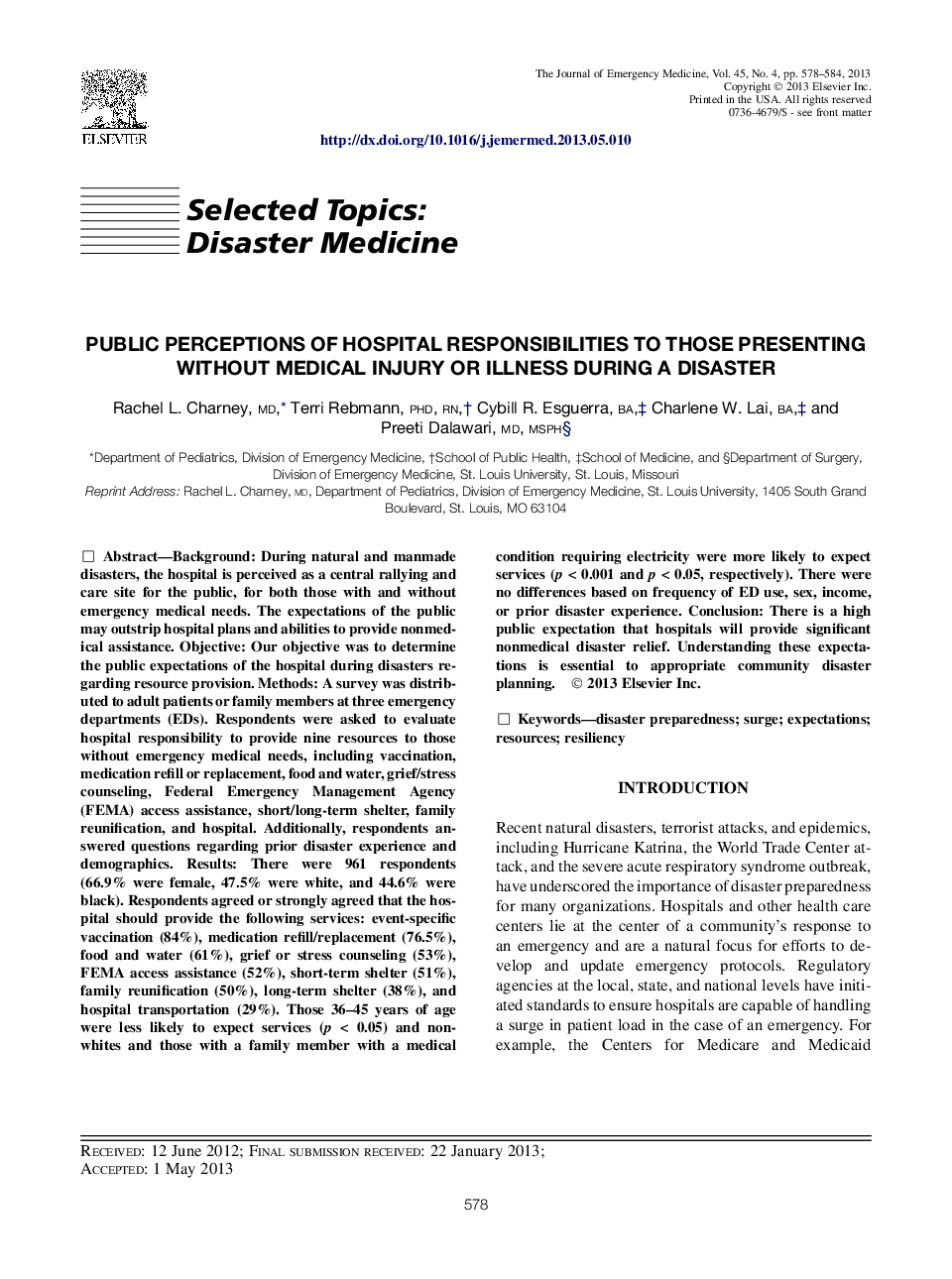| کد مقاله | کد نشریه | سال انتشار | مقاله انگلیسی | نسخه تمام متن |
|---|---|---|---|---|
| 3247797 | 1589144 | 2013 | 7 صفحه PDF | دانلود رایگان |

BackgroundDuring natural and manmade disasters, the hospital is perceived as a central rallying and care site for the public, for both those with and without emergency medical needs. The expectations of the public may outstrip hospital plans and abilities to provide nonmedical assistance.ObjectiveOur objective was to determine the public expectations of the hospital during disasters regarding resource provision.MethodsA survey was distributed to adult patients or family members at three emergency departments (EDs). Respondents were asked to evaluate hospital responsibility to provide nine resources to those without emergency medical needs, including vaccination, medication refill or replacement, food and water, grief/stress counseling, Federal Emergency Management Agency (FEMA) access assistance, short/long-term shelter, family reunification, and hospital. Additionally, respondents answered questions regarding prior disaster experience and demographics.ResultsThere were 961 respondents (66.9% were female, 47.5% were white, and 44.6% were black). Respondents agreed or strongly agreed that the hospital should provide the following services: event-specific vaccination (84%), medication refill/replacement (76.5%), food and water (61%), grief or stress counseling (53%), FEMA access assistance (52%), short-term shelter (51%), family reunification (50%), long-term shelter (38%), and hospital transportation (29%). Those 36–45 years of age were less likely to expect services (p < 0.05) and non-whites and those with a family member with a medical condition requiring electricity were more likely to expect services (p < 0.001 and p < 0.05, respectively). There were no differences based on frequency of ED use, sex, income, or prior disaster experience.ConclusionThere is a high public expectation that hospitals will provide significant nonmedical disaster relief. Understanding these expectations is essential to appropriate community disaster planning.
Journal: The Journal of Emergency Medicine - Volume 45, Issue 4, October 2013, Pages 578–584